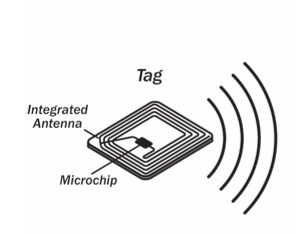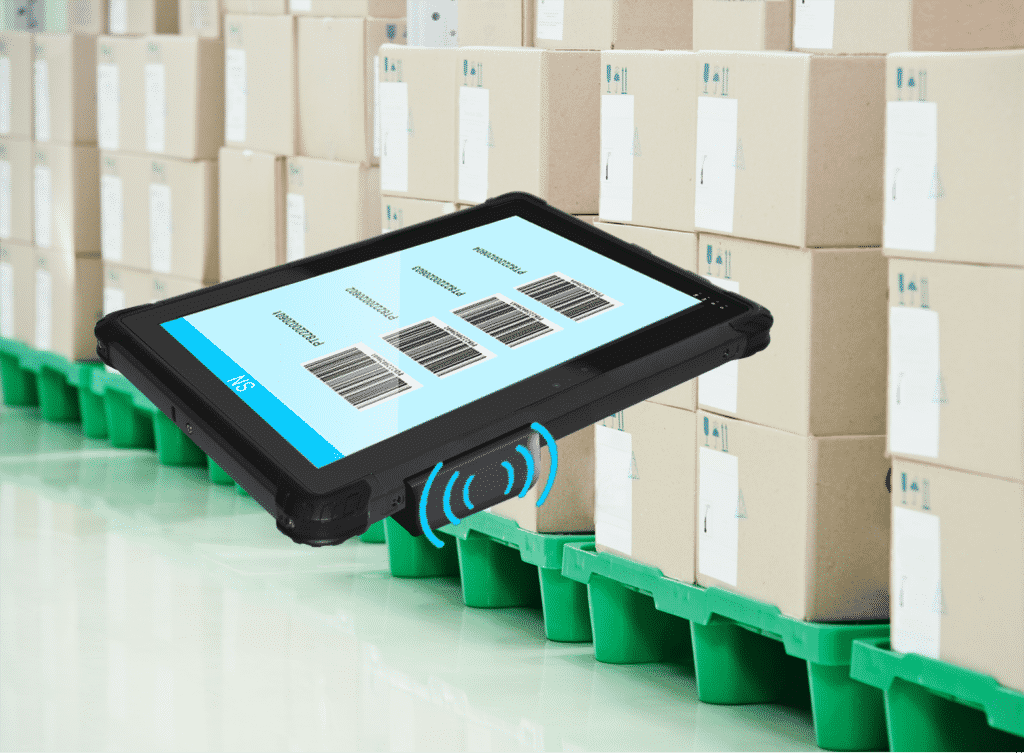Revolutionizing the world of retail, medicine and technology, RFID is the wireless, non-contact use of radio waves to transfer data. It is commonly used for access control, identification and tracking in a variety of industries and personal uses. RFID is part of a group of technologies called Automatic Identification and Data Capture (AIDC). AIDC methods include automatically identifying objects, collecting data and transferring that data into computer systems with little or no human intervention.
There is a lot of confusion among RFID including the different types based on frequency, the classification of tags, the various uses for the technology across different industries, and which devices are best suited for use with RFID. It is important to note that RFID technology comes in many different implementations. Scanners, readers and writers can be integrated into devices or be used stand alone. There are short range and long range configurations. Some reading configurations read in a batch while others scan by individual item.

Types of RFID Systems: Active, Passive, and Frequency
There are two ways to operate an RFID system and several types of RFID readers and tags that you can use across the system. An active system is when the tags are powered and constantly provide a radio signal, acting as a beacon. Passive systems do not power the tag to be read until the reader sends energy to the tag to activate it for reading.
These systems run on different spectrum of frequencies classified as Low Frequency (LF), High Frequency (HF), Ultra-high Frequency (UHF) and Near Field Communication (NFC). The frequency ranges for each classification are:
- LF: 125 KHz to 150 KHz
- HF: 3 MHz to 30 MHz (NFC: 13.56 MHz)
- UHF: 433MHz, 860 MHZ to 960 MHz
For more details on what distinguishes these technologies apart, read Active RFID vs Passive RFID: What’s the Difference?
Does your custom project require an RFID Reader?

RFID Readers and Scanners for Windows and Android Rugged Tablet PCs
It is important to make sure you use the correct equipment after selecting the type of RFID system you intend to use. An OEM RFID Reader solution may consist of an external RFID reader that is compatible with your Windows or Android device and used as a hand scanner. In other instances, a RFID reader or scanner can be integrated into your windows or android tablet PC. When exploring these options, it is important to note if the reader can be used with the system you have decided.
A tablet manufacturer with RFID readers integrated in the system or available as a module, can select which frequency to use, especially in an ODM circumstance. Companies seeking a rugged handheld RFID reader for industrial applications, such as warehouses, will need to determine if their employees would be more productive with an OEM RFID Reader or a tablet with an integrated or attachable reader.
A common question when determining what system to deploy is: Can my android with NFC read RFID tags or do I need a separate HF Tablet? Companies that have decided to leverage HF technology for their solution retain the added benefit that NFC can act as an HF reader as well as an HF tag, which provides versatility when choosing a solution.
Benefits of Tablet PCs with RFID Readers:
- Durability. RFID can work in harsh environments. It has strong penetrating power and can quickly identify and read tags even in harsh conditions such as extreme temperatures, high humidity, exposure to chemicals and rough handling.
- Large data capacity. The data capacity available on a RFID tag is relatively large. It can be expanded up to 32K, which is much higher than the capacity of 2,953 bytes available in a QR code.
- Dynamically operated. RFID tag data can be dynamically modified by programming, and it can be dynamically tracked and monitored as long as the RFID tag is within the effective recognition range of the reader.
- Long service life. RFID tags are not easily destroyed and they can be used for years.
- Increased efficiency. A RFID reader can read multiple RFID tags within range at the same time. They also eliminate human errors, increasing data accuracy.
- High security. RFID tags can be attached to a product in any form, and the tag data can be encrypted with a password to improve security.
- Fast recognition speed. As soon as a RFID tag enters the effective recognition range of the reader, it will start to communicate with the reader. Generally, the recognition can be completed in less than 100 milliseconds.
- Cost savings. RFID helps maintain tight control of stock or assets by providing an efficient means of tracking them.
ODM Platforms with RFID Capabilities
Does your project platform require a NFC RFID Reader on an Android Rugged Tablet PC? Do you have a requirement for an integrated UHF RFID or LF RFID Reader? Some of our Medical Tablet PCs and Rugged Tablet PCs can provide this feature as an option. For other ODM projects, this feature and be customized into the design. Contact Us to find out which products with integrated barcode scanners would best suit your needs or to create a custom design with a barcode scanner included.
